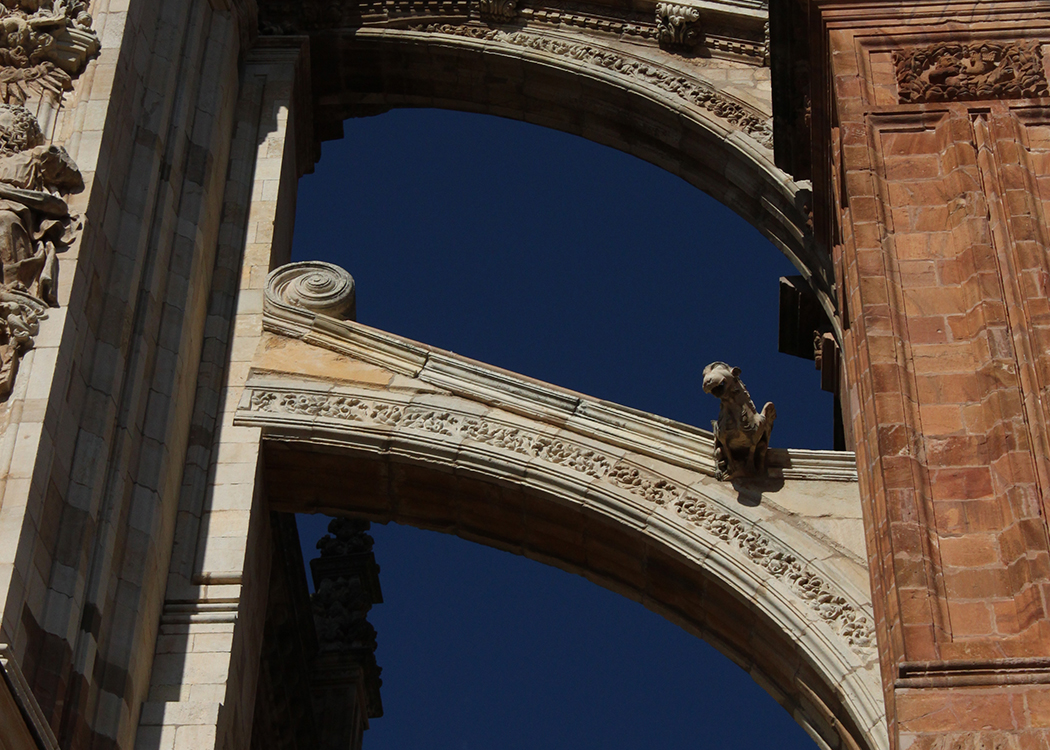 Previous Day |
Villar de Mazarife → Astorga 29.0 km (18.0 mi) |
 Next Day |
¡La verdad está ahí fuera, todos!
This morning, as I stepped out the door to go to Astorga, the night of zombies became a morning of aliens!
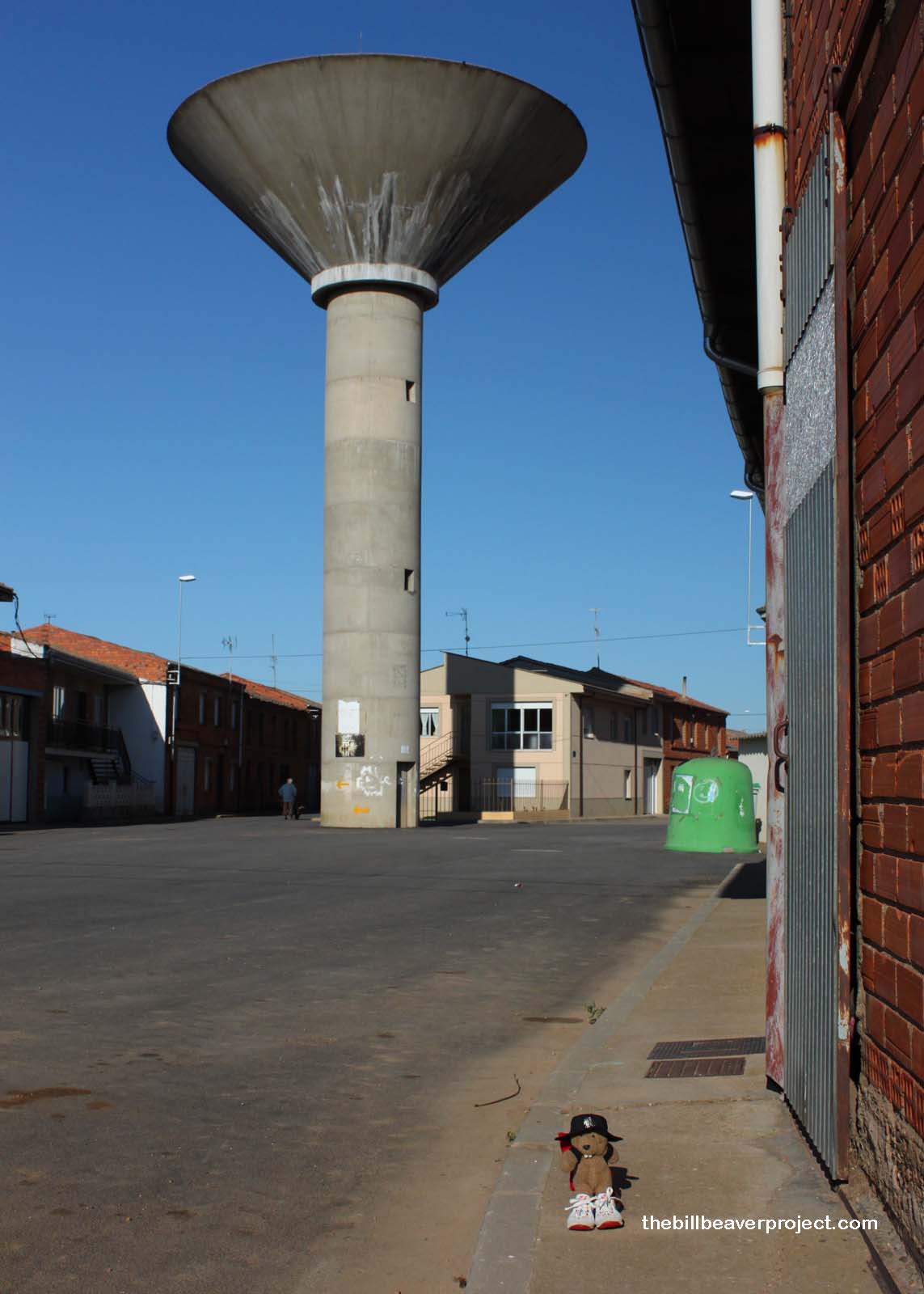 |
All around Villar de Mazarife and its neighboring towns stand enormous structures shaped like UFOs! They really contrast with the ancient buildings leading up to them! Since I was on the road so early, I couldn’t get a definitive answer for what they are, but the general impression on the internet is that they’re water towers! Considering this area is pretty flat and far from any other water sources, these would be great places for catching rain water, or holding rendezvous with visiting aliens!
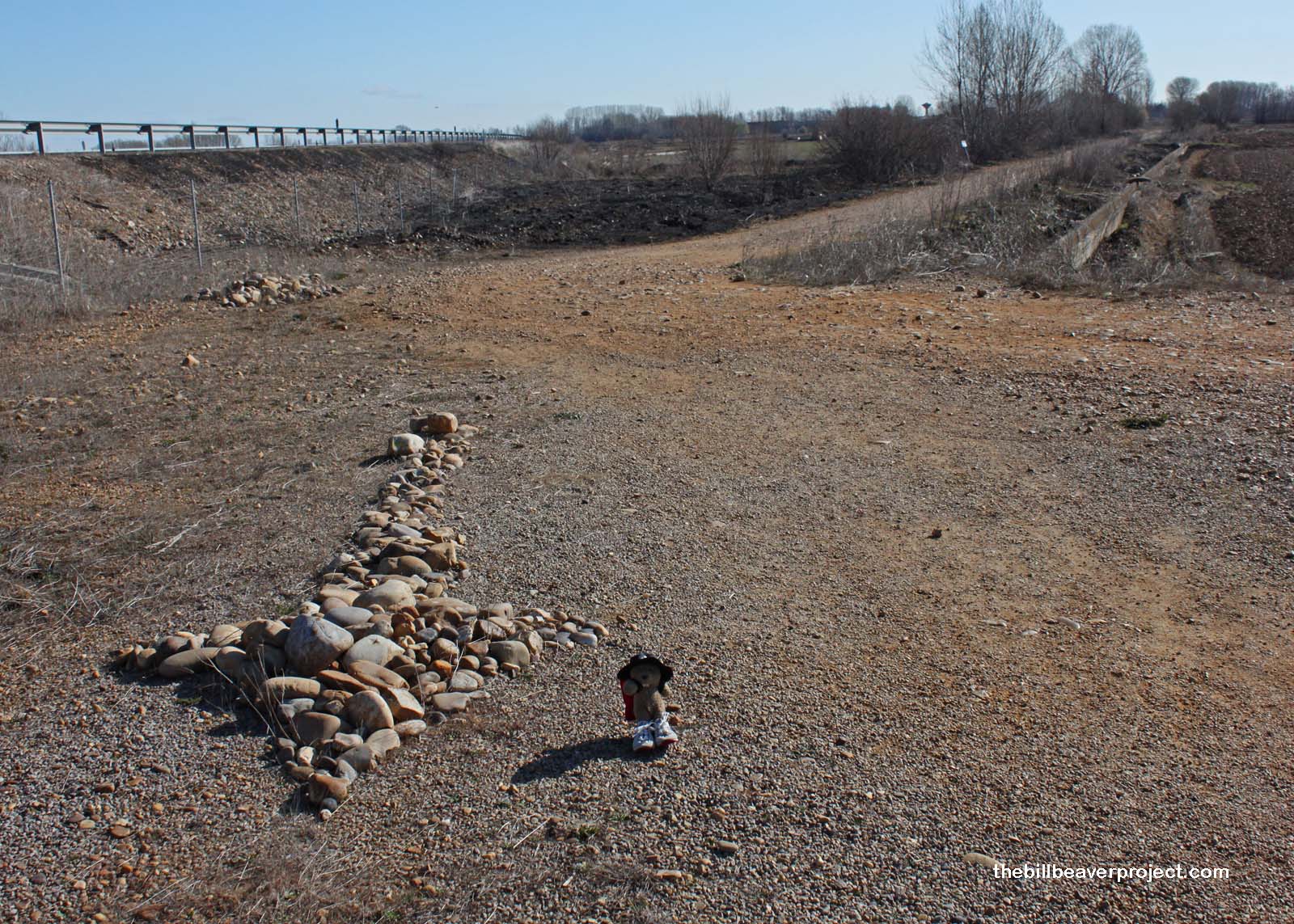 |
The first 9K stretch passed in a breeze this morning. I really didn’t know where it went. One minute, I was puzzling over the sign saying I’d only traveled 4K from Villar de Mazarife, and the next, I was in Villavante! I somehow jumped 5K in half an hour! Maybe there really are aliens at work here! These same aliens had spray-painted black over the arrows leading into Hospital de Órbigo, leading me into a great deal of confusion over where I was going!
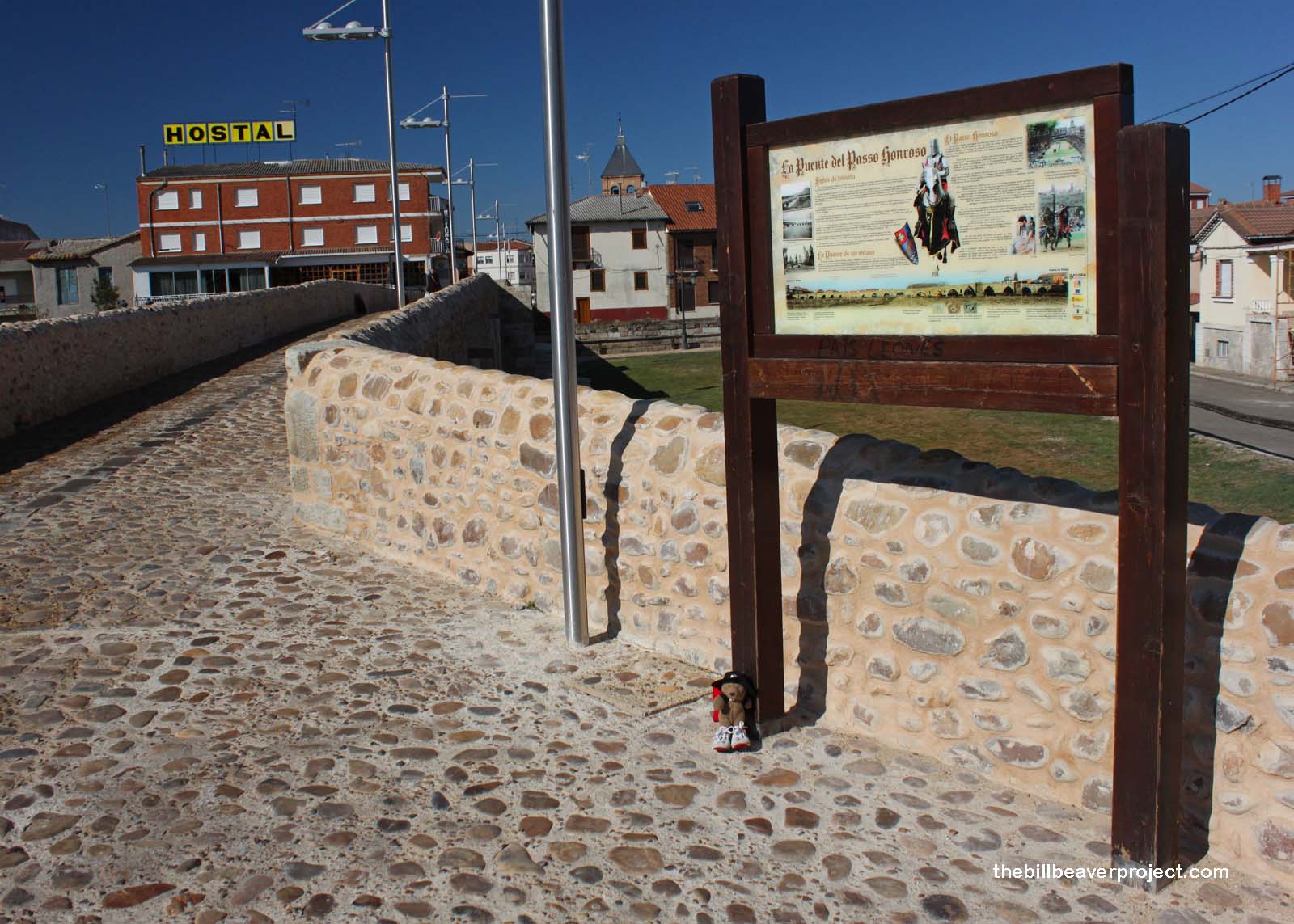 |
Luckily, my intuition led me to the Puente de Órbigo, also known as the Puente del Passo Honroso! Here, in 1434, Don Suero de Quiñones broke 166 lances in an ambush jousting tournament to impress Doña Leonor de Tovar! He’d promised her 300 lances, but he’d gotten so many injuries, Leonor agreed to marry him for 166! What a bargain! The bridge became known as the Passo Honroso, because only those who agreed to participate in the tournament were allowed to cross it. Peregrinos and noncombatants had to swim the river!
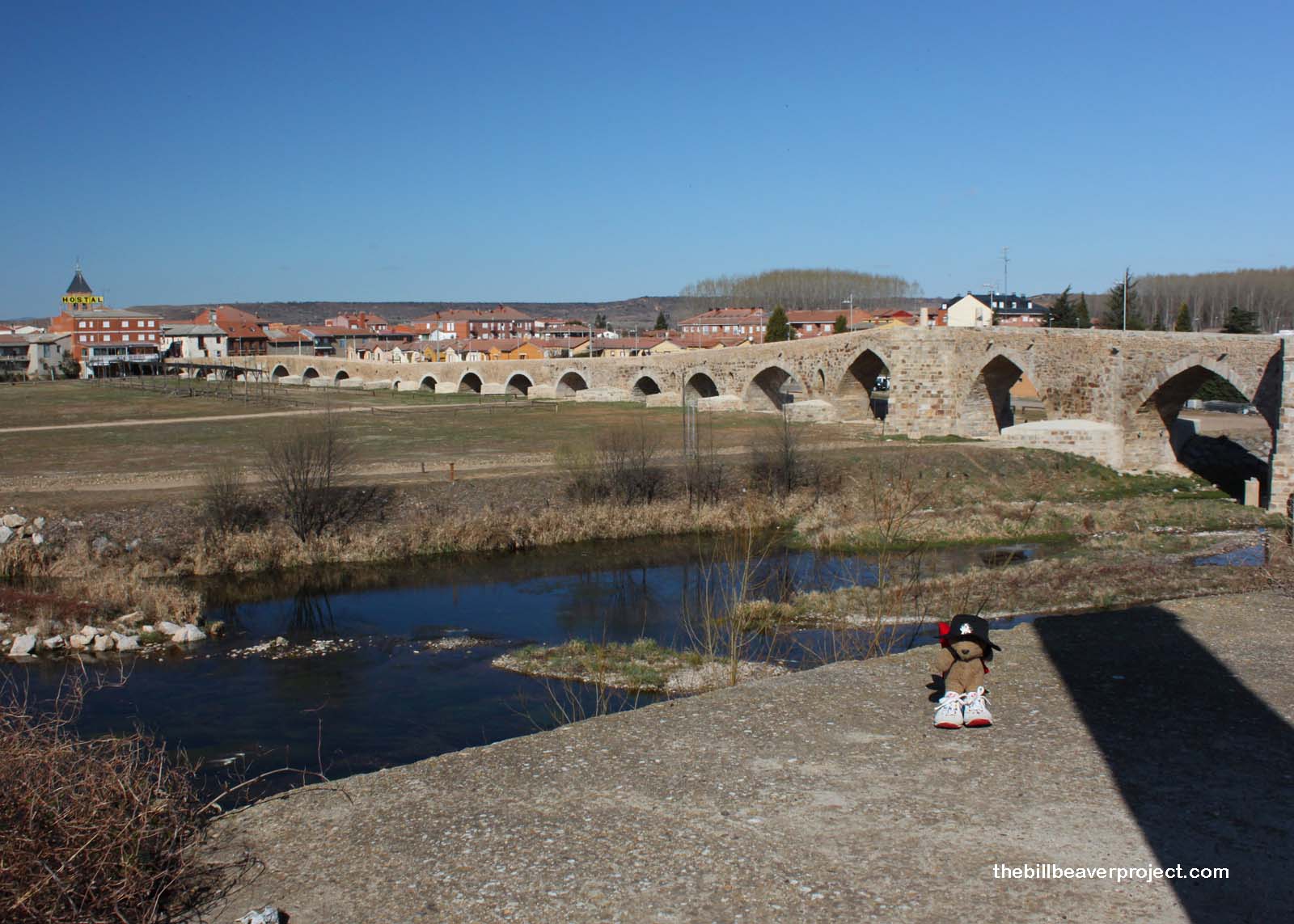 |
There are lots of morals in this story, some pointed out in Don Quixote, but I think a big one comes from Don Suero’s ultimate demise. After 24 years of marriage, he was murdered by a knight he had defeated in this tournament! That is way too long to hold a grudge!
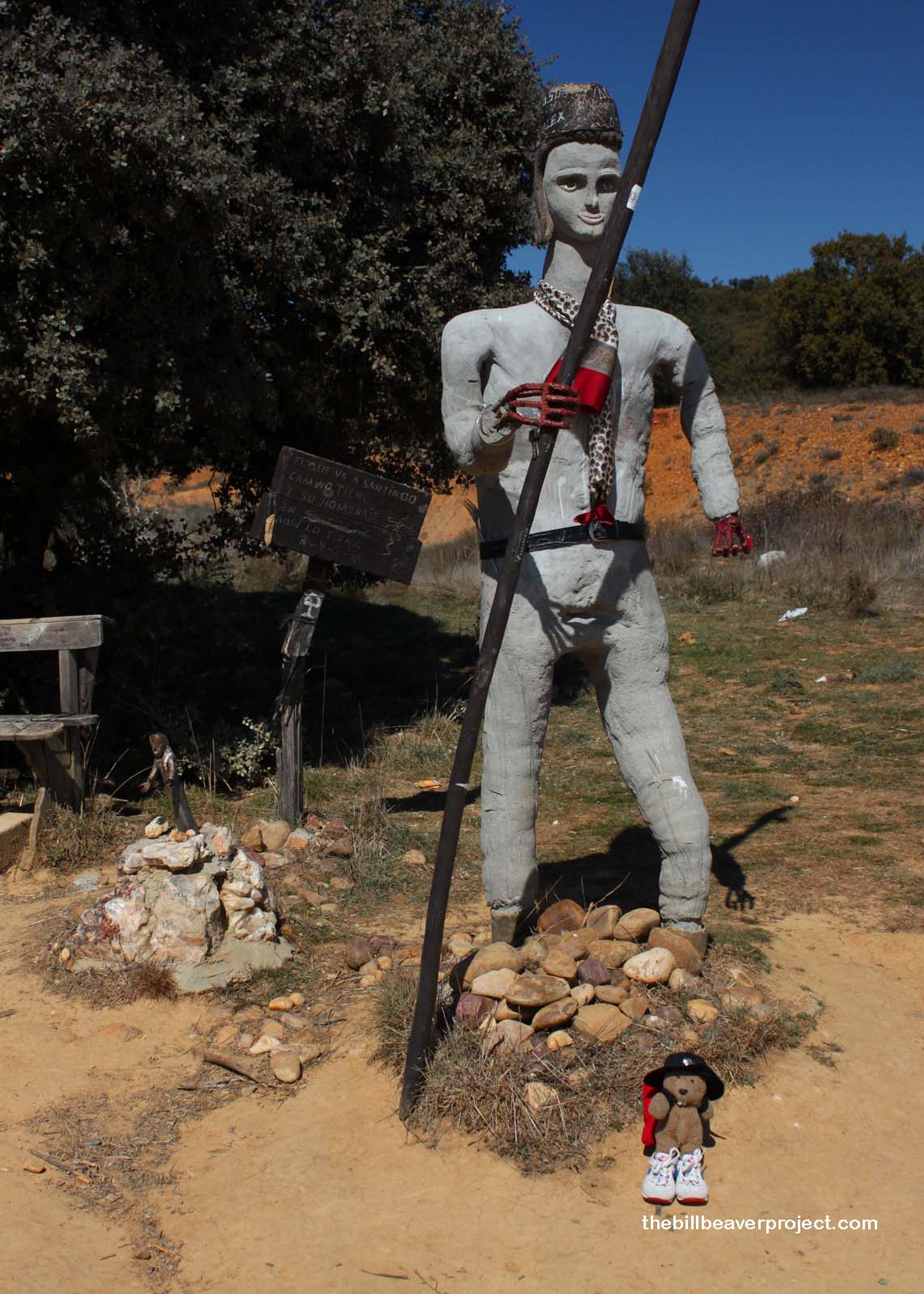 |
I heard rumors that the Meseta would be coming to an end soon, and sure enough, the flat emptiness had turned into rolling hills and woodland! This stretch passed an odd collection of artwork, apparently left by peregrinos over the years. The pieces included a cross, a table of inscribed stones, a miniature peregrino, and what looked like a giant, spear-wielding Aztec warrior! I was not expecting to see one of those in the middle of the Camino! However, as I later found out, this “warrior” was originally dressed as a peregrino! He had a robe, and his “spear” was once a walking stick! I guess it’s a dangerous thing to put clothing on a publicly displayed sculpture!
As the hills began to roll more dramatically and sprout big, silver bales of hay, I caught sight of the snow-capped mountains in the distance. Tomorrow, I will be in them! I hope the weather will hold up, because I don’t know if I’ll be able to find four French ladies to help me this time!
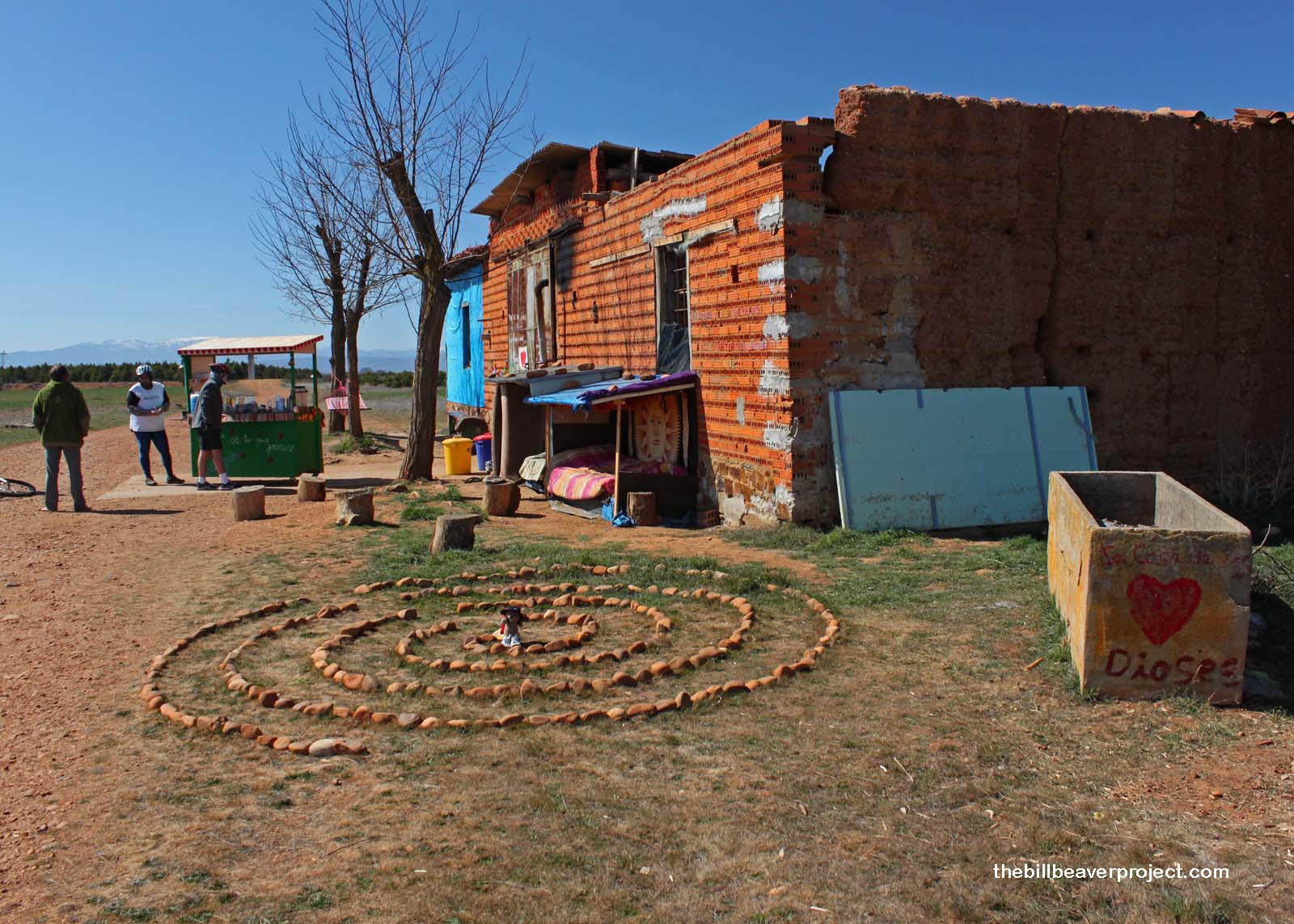 |
As I crested a big hill, I discovered the fifth miracle of the Camino: the Casa de los Dioses. Here, in the middle of seemingly nowhere, a fellow named David has set up a snack bar for passing peregrinos! He’s got bread and cookies and granola and zumo and… peanut butter! I don’t know where he got it, but it was from somewhere in Scandinavia, judging by the labeling. Peanut butter is almost impossible to find in Spain, as are extra virgin olive oil and whole wheat bread, but somehow, he had it, and he let me make a peanut butter sandwich right here!
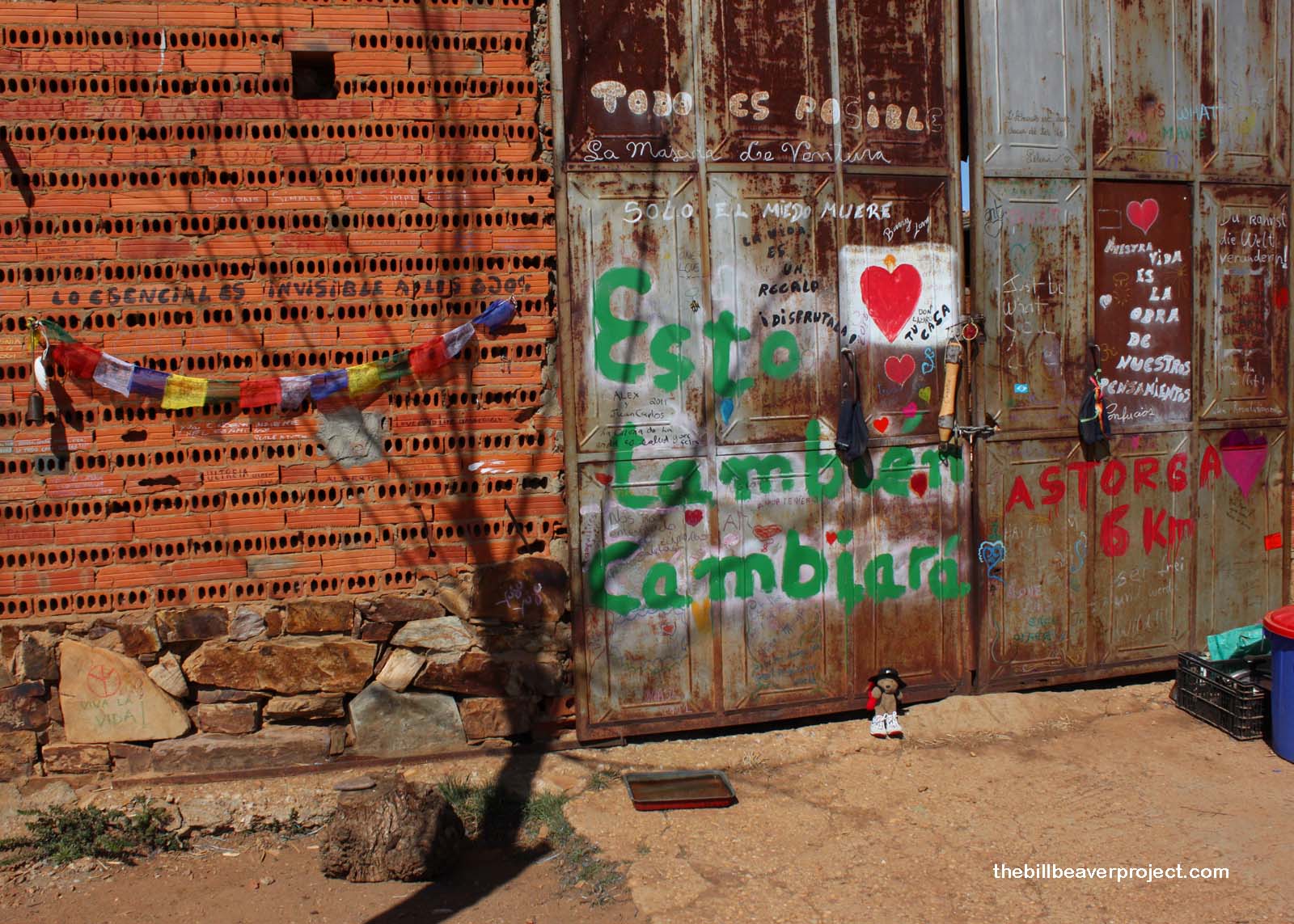 |
David has been living alone in this otherwise abandoned farmhouse and continuously providing rest and sustenance for passing peregrinos for several years! He is truly living the Camino every day, subsisting entirely on whatever donations he receives. Sometimes, he bikes as far as Galicia to get new supplies, though I still wonder about the Scandinavian products. Maybe they’re also donated? Anyway, if there had been any doubt that this was a special place, there’s even a quote on the wall from one of my favorite books, The Little Prince:
| “LO ESENCIAL ES INVISIBLE A LOS OJOS.” |
or | “ANYTHING ESSENTIAL IS INVISIBLE TO THE EYES” |
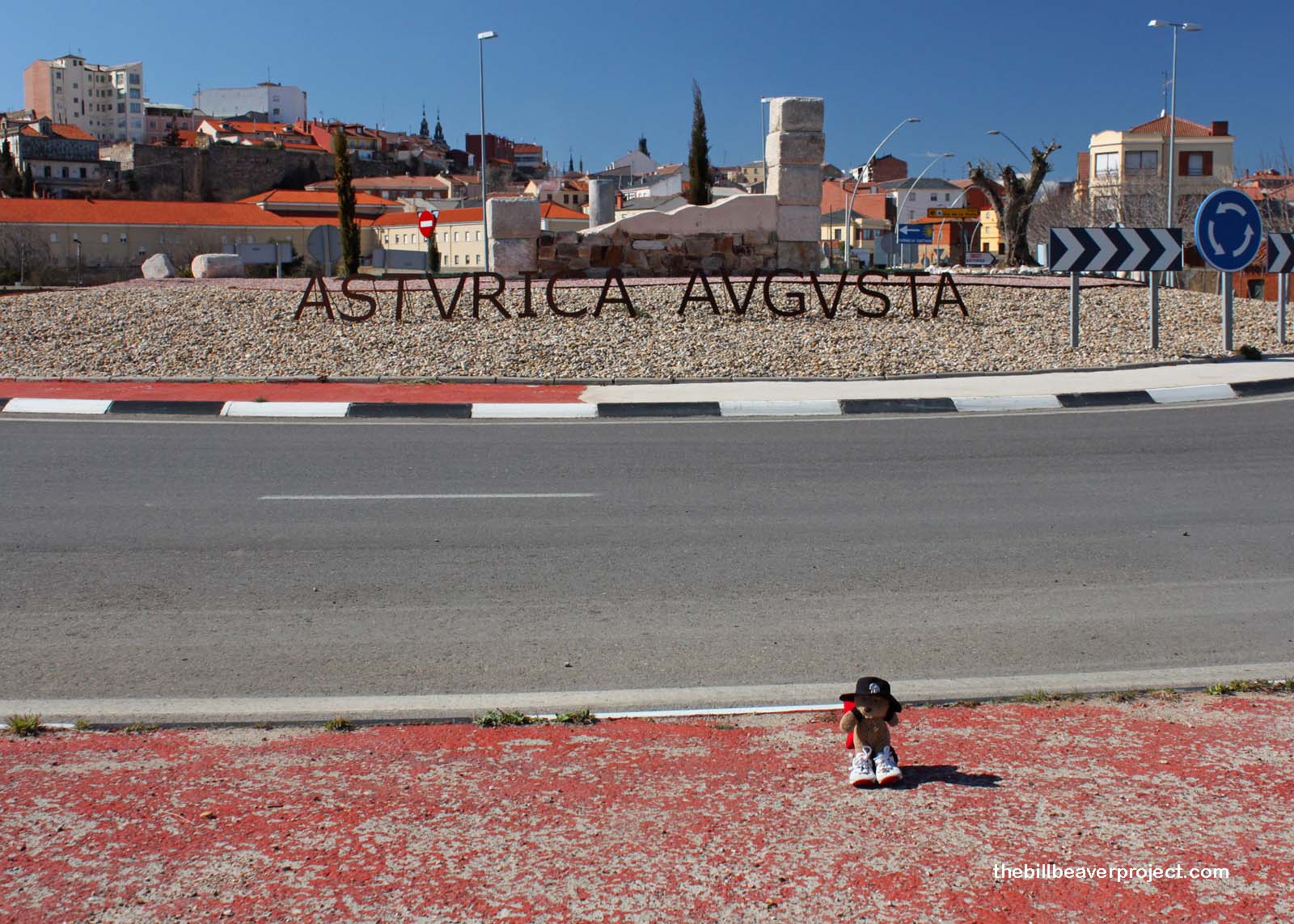 |
After bidding “Hasta luego” to David, I continued the last 6K into Astorga, the former Roman town of Asturica. Many of the Roman walls can still be seen in town today, and there is a lovely Roman museum set up in town. However, with limited time and no less than four museums in town, I had to make a decision. Should I delve into Astorga’s rich Roman past, its relationship to the Camino, its relationship to the church, or… Well, Astorga is known as the chocolate capital of Spain, and there just so happens to be a Museo de Chocolate!
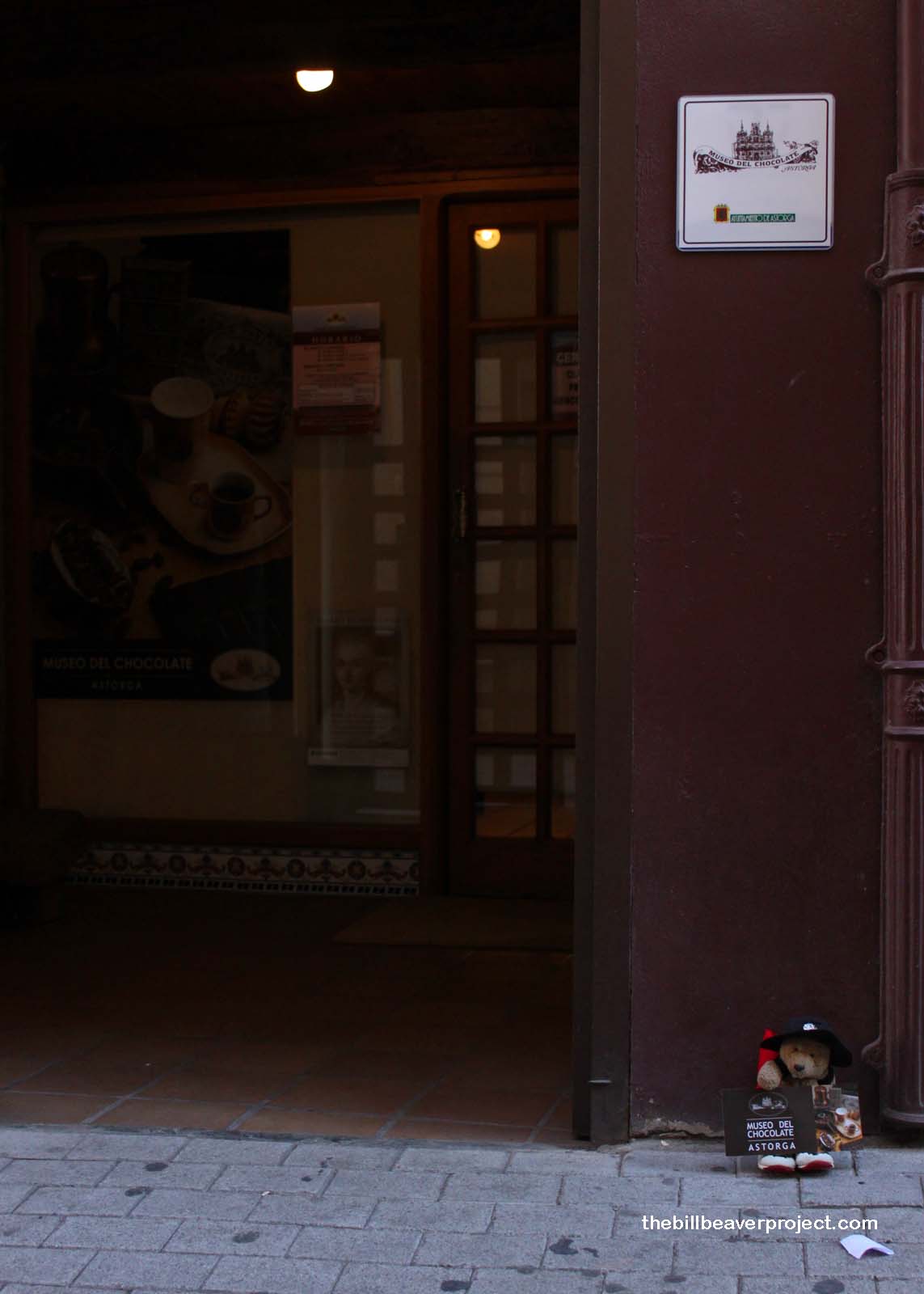 |
This museum went into great detail about the manufacture of chocolate, from harvesting the huge cocoa pods to toasting the beans, mashing the beans into paste, mixing the paste with sugar, molding… I was drooling just watching the informative video! They had a chocolate tasting area with various degrees of darkness, milk, nuts and instructions on how to appreciate the sight, the aroma, the texture, and finally, the flavor. If they weren’t in such a hurry to close an hour ahead of their posted schedule, I might have stuck around all night!
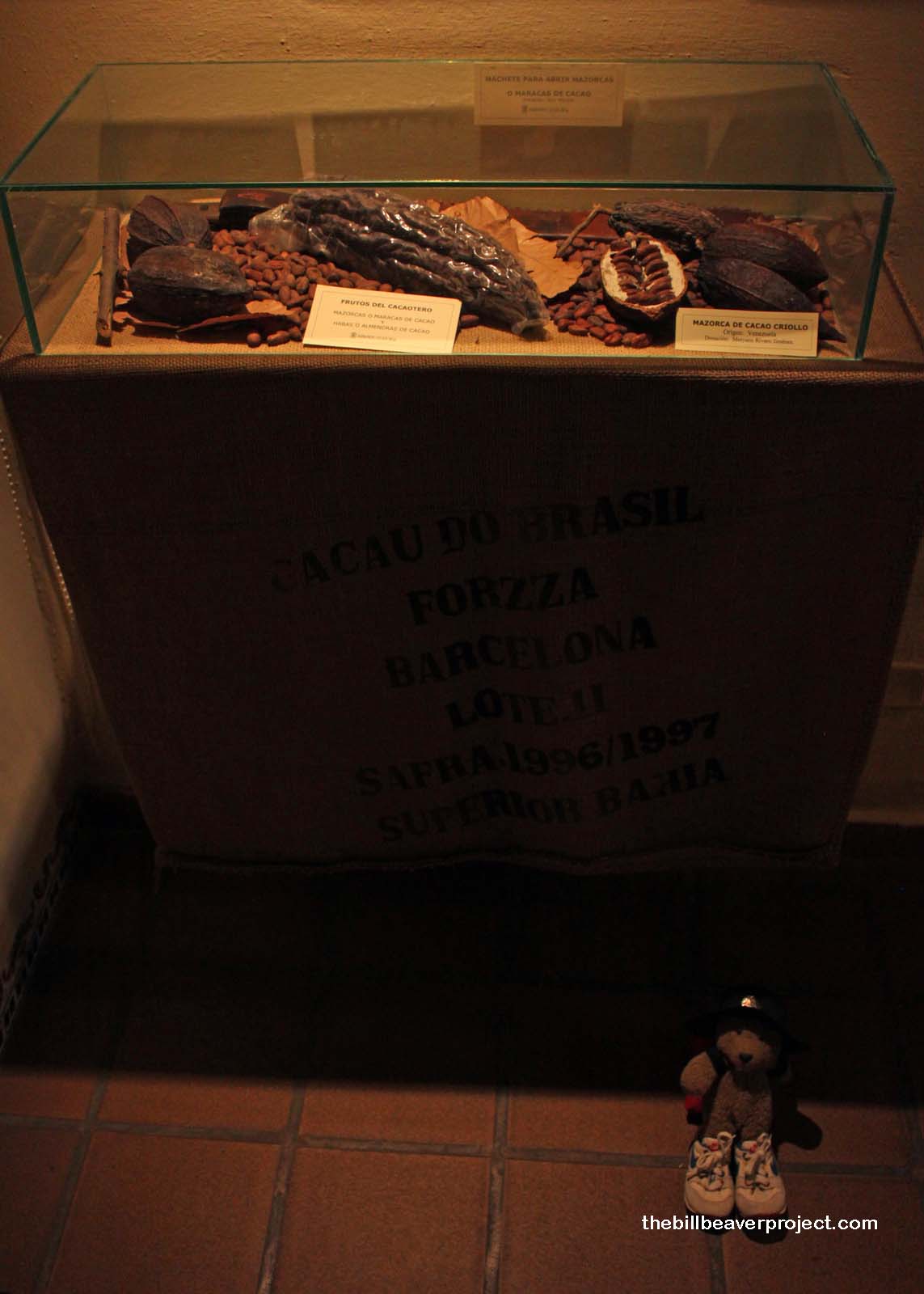 |
So how did Astorga become the chocolate capital of Spain? As we all know, Spain conquered the vast majority of Central and South America, and one of its most notorious conquistadores, Hernán Cortes, really took to this marvelous substance called xocolotl. In 1545, long after returning from across the Atlantic, Cortes brought chocolate hors d’oeuvres to his daughter’s wedding to the Marquis of Astorga, and the rest is delicious, delicious history!
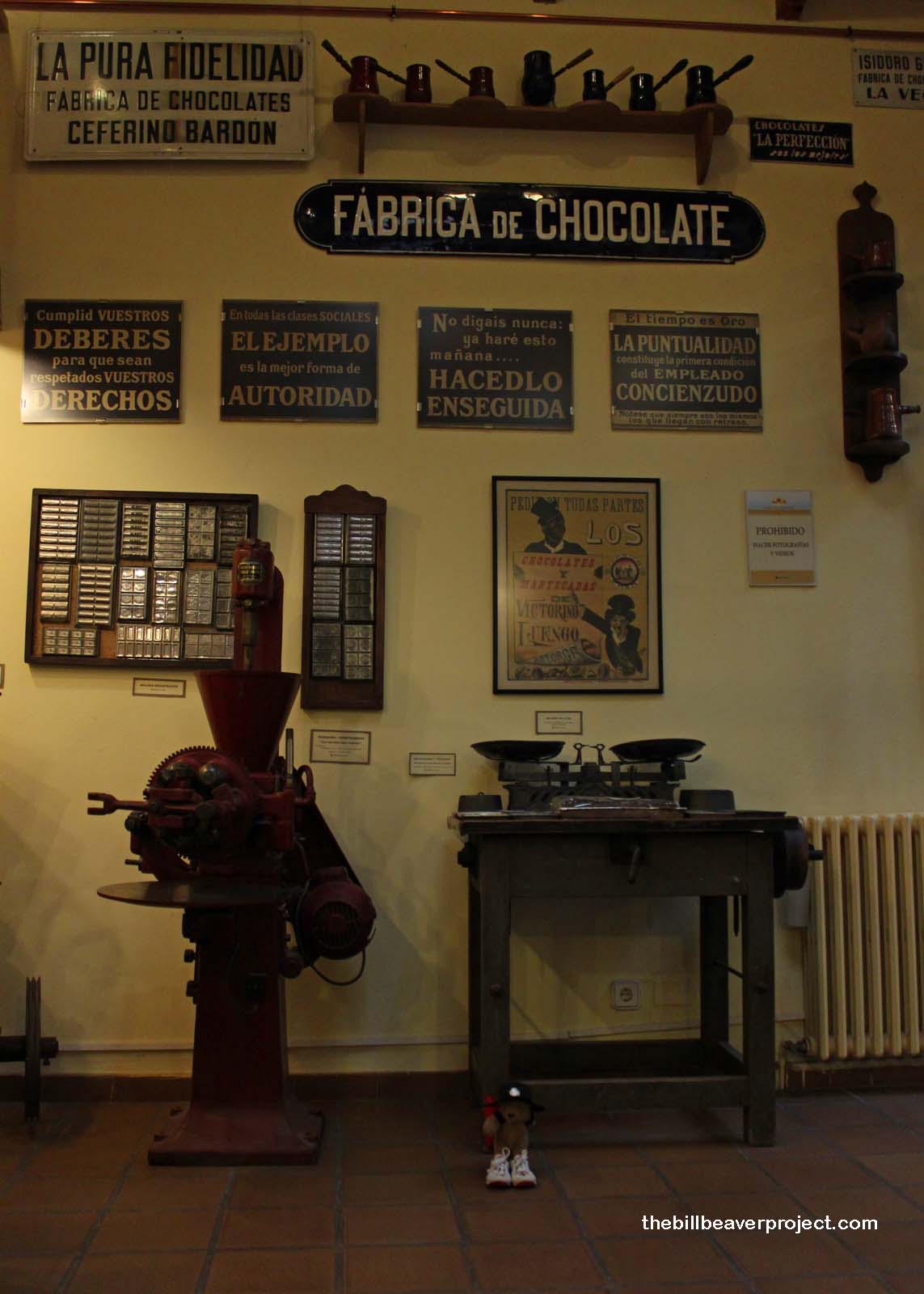 |
Actually, there was more to it than that. Since chocolate was the Marquis’ new favorite food in the world (and officially endorsed by the diocese of Astorga), he made use of the network of roads, put in place by the Maragato transporters for quick access to the port of A Coruña. That meant a quick and steady flow of chocolate supplies into Astorga, where the demand was increasing by the day!
By 1914, there were over 49 brands coming out of Astorga, such as Magín Rubio’s La Palma Astorgana (founded 1878), José Gómez Murias’ Los Maragatos (1887), and the appropriately named La Paz of Gervasio Sarmiento (1896). Vintage chocolatiers got very creative with their bars, releasing special themed sets that featured flowers, royal costumes from different periods of history, and even early Hollywood celebrities! Right now, the big brand of Astorga appears to be Alonso, because it is advertised everywhere!
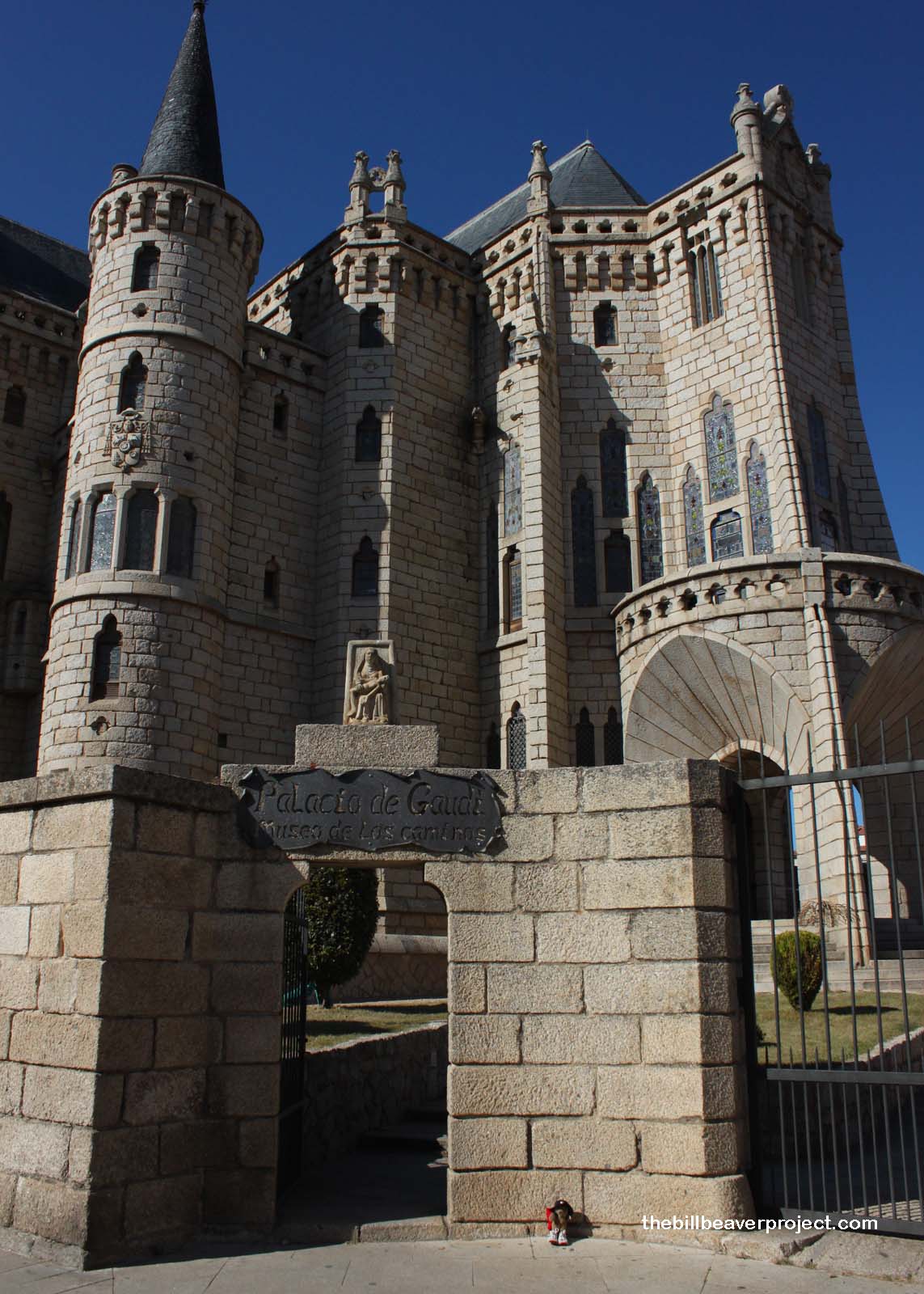 |
Just a hop, skip, and a jump from the Museo stands the second of Gaudí’s three extracatalonian edifices, the Episcopal Palace! Now, we’ve heard how Gaudí got involved with the Casa Botines, but what on Earth would have brought him all the way out to Astorga (apart from the chocolate)? Well, it just so happens that the bishop of Astorga in 1887 was Catalan! A huge fire had destroyed the original Episcopal Palace, so the bishop, a big fan of Gaudí’s work, commissioned Gaudí to create a new one!
That worked out all fine and dandy for a while, until the bishop died, the Diocese asked Gaudí to tone down the design that they didn’t understand, and the Ministry of Grace and Justice “forgot” to pay him! So technically, this isn’t entirely a work by Gaudí but multiple architects, and it wasn’t opened as an Episcopal Palace but a meeting place for the fascist political party, Falange Española! Nowadays, it has been tamed considerably and been transformed into a museum all about pilgrimages!
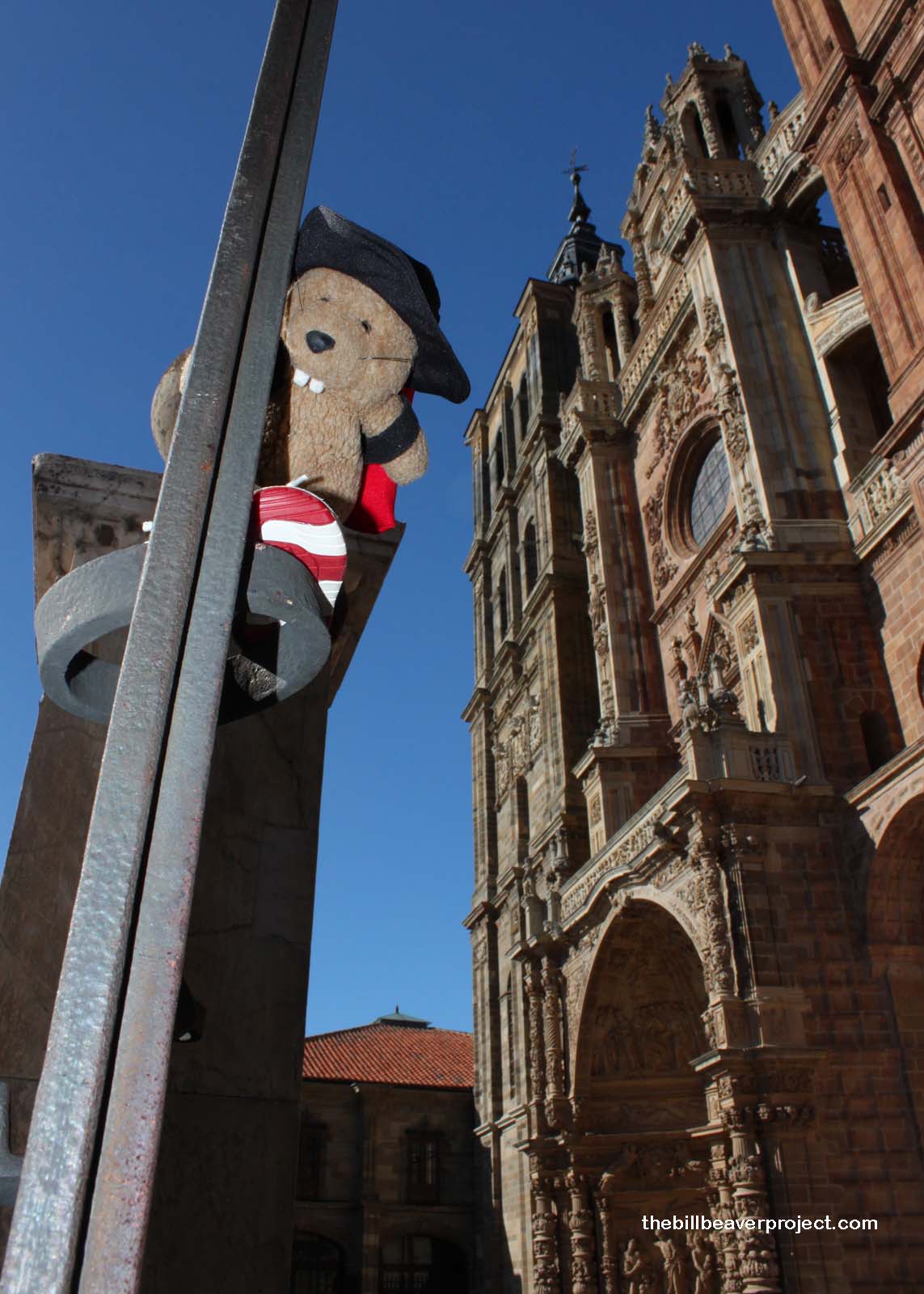 |
To conclude my sightseeing adventure, I stopped off at the last cathedral before Santiago, Santa María de Astorga, one of the youngest cathedrals (1471) for one of the oldest dioceses (3rd century) on the Iberian peninsula! I was shocked when I first arrived because of the color of its bricks: as brown as chocolate! This Gothic cathedral was actually built over an old Romanesque church, which honored Nuestra Señora de la Majestad.
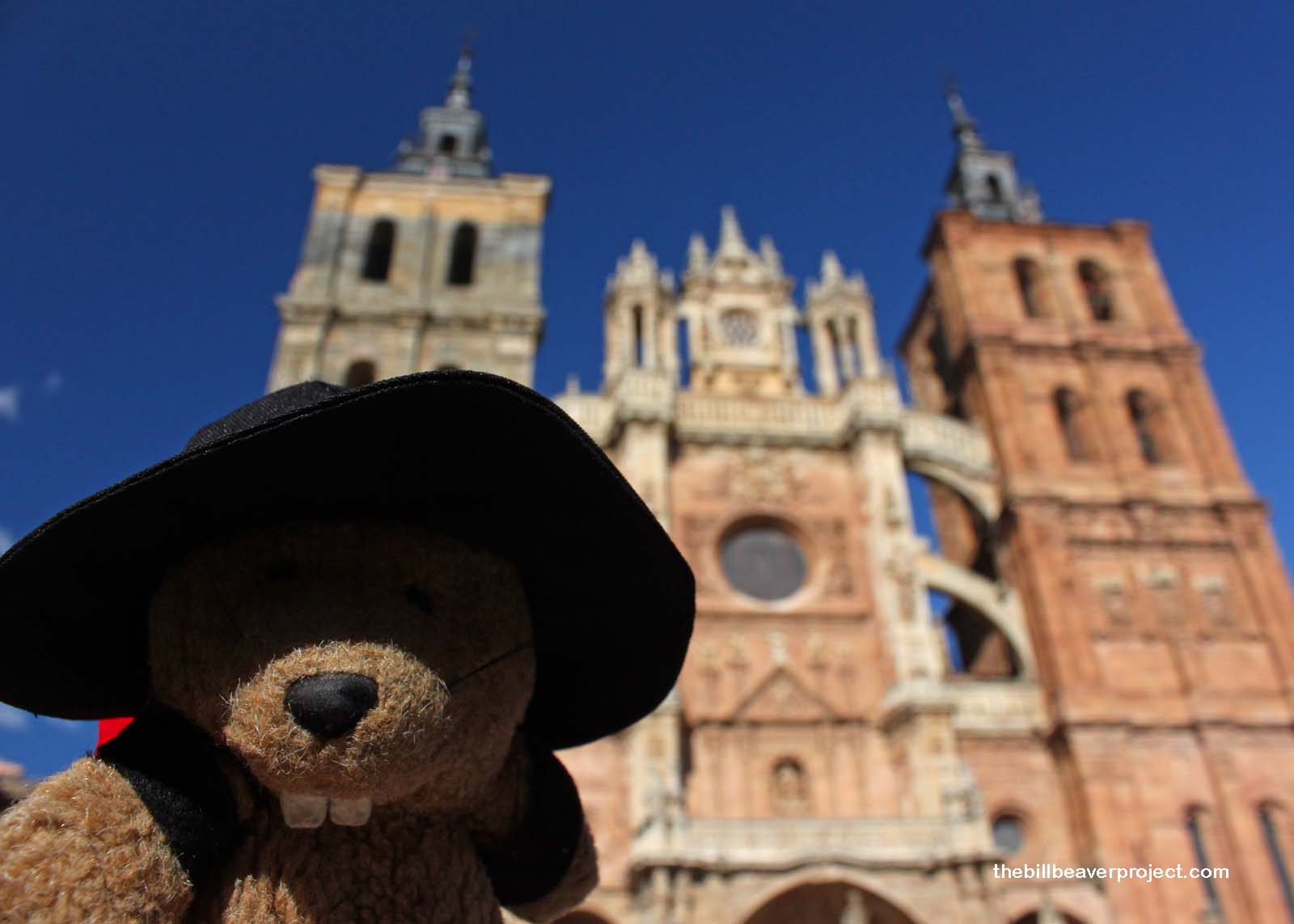 |
I’m definitely picking up a pattern by now: every Cathedral so far (minus Santo Domingo de la Calzada) has been dedicated to Saint Mary. There was Santa María la Real in Pamplona, la Redonda in Logroño, de Burgos in Burgos, de León in León, and now, de Astorga in Astorga. That’s because the Catholic Church teaches a parental view of God being the father and the church being the mother. Since one could call a cathedral the mother of all churches, it made sense to dedicate a cathedral to Christianity’s number one mom: Mary!
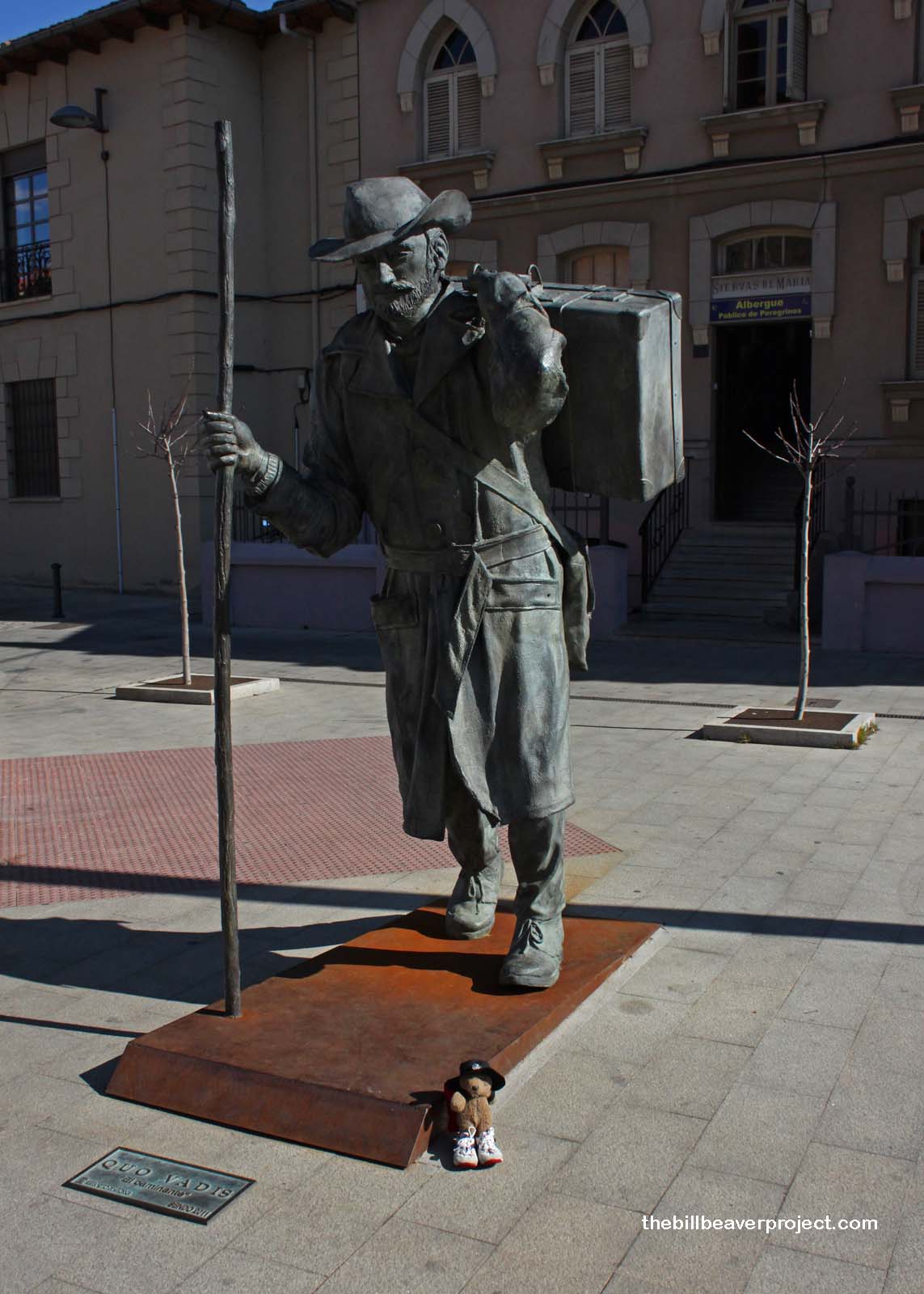 |
Having had my fill of both sights and chocolate for the day, I retired to the albergue, also formerly dedicated to Mary. A huge albergue, it had smaller rooms that gave the impression of a cozy environment. At least it looks like I won’t have to deal with any zombies tonight! Hooray!
Buen Camino!

P.S. Happy Spring Equinox, everyone! Now, it’s time for me to find flowers over the water in order to celebrate the beaver holiday of Firstbud! I hope there is such a thing on the Camino!
 Previous Day |
Total Distance Walked: 508.6 km (309.7 mi) |
 Next Day |
